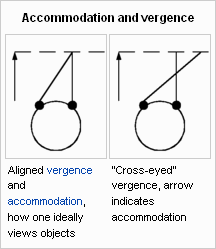Squint Eye
Squint Eye also known as crossed-eye and Scientifically known as Strabismus, is a condition of human eye in which both the eyes are not properly aligned with respect to each other. It prevents the eyes from focusing on a same point in space.
Strabismus may affect depth perception i.e. determining the distance of an object and recognize a 3D object. Only 4% of children are affected by this problem.
Symptoms–
In squint Eye One eye moves normally, while the other points up (hypertropia) or down (hypotropia), in (esotropia), out (exotropia). It can also be related with “lazy eye” or amblyopia in which brain ignores input from one eye.
Test
To test for Squint eye you must consult an ophthalmologist, who will diagnose you by making you look at a light or matching pictures and letters, looking at visual targets with one eye closed or covered, reading an eye chart.

Causes
Squint is a result of weak eye muscles surrounding our eyes or if they are compromised. It may also be due to Central nervous system disorders, like cerebral palsy. Other causes includes impaired vision resulted from eye disease including retinal cancer or cataract.
Impact
Strabismus affect depth perception which result in imperfect binocular vision which is most important for Defence forces as one has to aim on a target with gun. Person with squint eye faces problem in determining the distance of an object as our both eyes helps in determining the distance. Also people suffering form Squint faces problem in visualizing 3D images.
Treatment
Early detection and treatment is helpful in restoring normal vision. There are surgeries and other treatments for Squint Eyes. If you are having squinted eye then you must consult an ophthalmologist and ask him about all pros and cons of the surgery required to treat squint.
In some cases Eye Exercises are helpful in treating squint, in which doctors focus on training the surrounding muscles. Vision therapy is also common practice to retraining eye muscles, therapy also helps in controlling eye alignment, focus and information processing.

